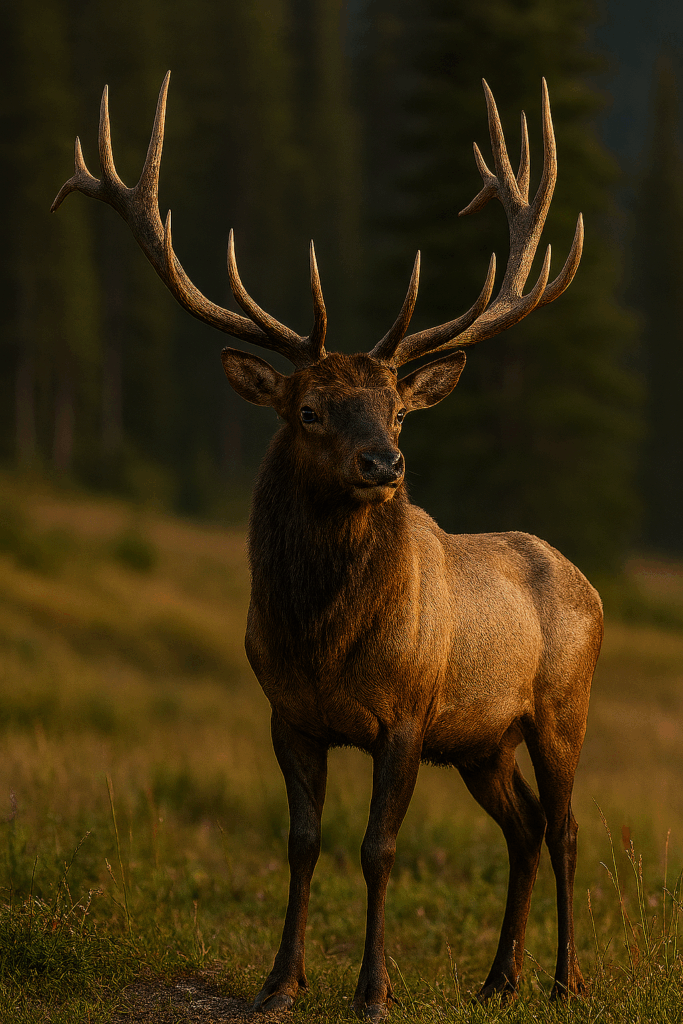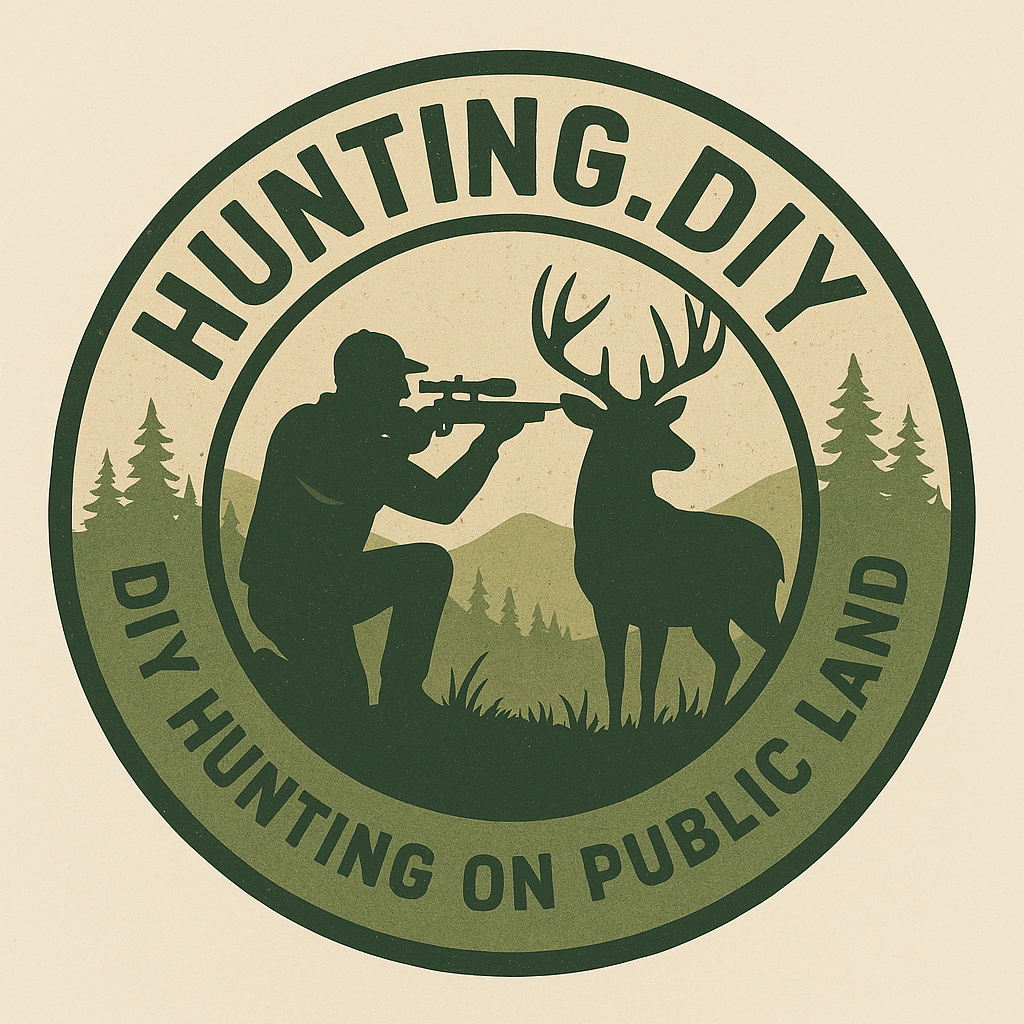Elk DIY Hunting Guide & Tips
Elk hunting guide: Leave the beaten path and earn that bull—no guides, no shortcuts. Hunt elk on public ground and prove you’ve got what it takes.

Species Classification
Elk (Cervus canadensis) rank among North America’s largest deer species, sitting alongside moose and caribou in the Cervidae family. Also known as wapiti, elk are split into several subspecies, with Rocky Mountain elk being the most widespread in the western U.S. This is DIY hunting—learn the elk’s biology, outsmart their senses, and stake your claim on public land.
Elk Grand Slam: Chasing All 4 American Elk Species
The Elk Grand Slam is one of the most ambitious achievements in North American big game hunting. Hunters who accomplish this have successfully harvested each of the four recognized American elk species: Rocky Mountain, Roosevelt, Tule, and Manitoban. Each species presents unique challenges, from the steep high country of the Rocky Mountains to the coastal rainforests home to Roosevelt elk, the exclusive California range of Tule elk, and the vast prairies that hold the Manitoban. Completing the Elk Grand Slam proves your skill, adaptability, and dedication to elk hunting at the highest level.
Track Your Grand Slam Progress: turkeyandelk.com Grand Slam Tracker
Staying organized on a grand slam quest can be a challenge, which is why the Grand Slam Tracker tool at turkeyandelk.com is a game changer. This simple yet powerful tracker lets you log your successes, note the dates and locations of each elk you harvest, and upload photos and memories along the way. Use this tool to plan your hunts, record your journey, and showcase your achievement as you work to join the elite ranks of Elk Grand Slam hunters.
Physical Description
Adult bull elk stand 4.5 to 5 feet at the shoulder and can tip the scales at over 700 pounds. They boast a tawny body coat that darkens to a rich brown mane during the rut, with a pale rump patch framed by a black skirt. Bulls carry expansive antlers that can span up to 5 feet and carry six to eight points per rack. Cow elk are smaller, around 500 pounds, and lack antlers, but they form protective harems that bulls fiercely defend during breeding season.
Distribution and Habitat
Elk occupy diverse terrain from alpine meadows to rolling foothills, ranging from British Columbia through the Rocky Mountains into New Mexico and eastward into parts of the Midwest. Prime public-land haunts include high-elevation parks, national forests, and BLM lands above 7,000 feet in summer, shifting to lower valleys and river bottoms in fall and winter. Avoid predictable game trails and seek steep timbered ridges where elk bed and feed undisturbed.
Season Dates and Regulations
Elk seasons vary by state and unit; archery seasons typically open in mid-August, with general rifle hunts kicking off in late September and stretching into October or November. Some states offer late-season muzzleloader or managed hunts in December. Tag quotas and drawing odds hinge on unit popularity—scoring low preference points might yield a tough draw for trophy units, so research regional draw odds and apply early.
Best Hunting States/Regions
Colorado, Wyoming, Montana, and Idaho top the list for DIY elk hunts. Colorado’s high-country units boast abundant elk but stiff competition; consider second-tier GMUs for fewer hunters. Wyoming’s elk zones combine rugged backcountry with manageable crowds. Montana’s Bitterroot and Lolo zones offer public lands with reliable elk movement, while Idaho’s Frank Church River of No Return Wilderness demands serious endurance but rewards with big bulls.
Hunting Equipment (Gun and Ammo)
A .300 Winchester Magnum or 7mm Remington Magnum delivers the long-range reach and knockdown power elk demand, especially at altitude. For closer terrain, a .30-06 Springfield remains a versatile choice. Opt for 150–180-grain bonded bullets to ensure deep penetration through heavy shoulders. Carry 30 rounds of range ammo and 20 field rounds; zero your rifle at 200 yards and confirm trajectory out to 300 yards before entering elk country.
Hunting Methods and Techniques
Spot-and-stalk is the gold standard—glass high ridges at first light, pick out feeding bulls on distant benches, then circle downwind for a flanking approach. Call sparingly with elk cow calls or bugles to draw a bull into shooting range, but know that overcalling spooks mature bulls. Alternatively, set up at water sources or mineral licks at dawn; elk concentrate heavily where salt and water converge.
Licenses and Tags
DIY elk hunting hinges on obtaining the right license and hunt code. Purchase general-season tags or apply for limited-draw permits through your state’s wildlife lottery system. Deadline for drawing varies by state, often early spring. Carry your tag, license, and harvest report on every outing; losing paperwork in the field is an unforgivable rookie error.
Diet and Feeding
Elk are mixed feeders, grazing grasses in meadows and browsing willows and aspen shoots in timbered areas. In spring and early summer, lush grasses and clover fields attract elk, while fall drives them to acorn flats and oak brush stands. Scout feeding grounds with fresh droppings and flattened forage; these hotspots are where bulls fatten up before the rut.
Reproduction and Life Cycle
The rut peaks in late September through early October, with bulls bugling, sparring, and gathering harems of cows. Gestation lasts about 240 days, and calves arrive in late May to early June, weighing around 30 pounds. Cow elk protect their calves vigorously, but calves trail their mothers into winter grounds by late fall. Understanding herd dynamics helps you position yourself for a shot on a lone bull post-rut.
Population Status
Elk herds have rebounded since early 20th-century declines due to overhunting and habitat loss. Wildlife agencies conduct aerial surveys and ground counts to monitor herd health, adjusting harvest regulations to maintain balanced populations. Some units face overbrowsing issues, prompting conservative tag numbers, while recovering areas offer liberal limits. Consult agency population reports to pick units with stable or growing herds.
Meat Quality and Processing
Elk meat is lean, tender, and mildly sweet—an upgrade from beef. Field dress immediately and cool carcasses rapidly to preserve flavor. Quarter the elk on-site, removing hindquarters and backstraps first. Hang quarters in a mesh bag at 36°F for up to a week to age, then butcher into steaks, roasts, and ground meat. Pack out only meat cuts; leave excess bones and offal to minimize weight.
Safety Considerations
Elk country is steep, high, and remote. Never hunt solo in extreme terrain—injury or sudden weather changes can turn deadly. File your trip plan with someone reliable, and carry a satellite communicator or personal locator beacon. Wear blaze orange during rifle season, even in dense forests, and practice muzzle discipline on steep slopes to avoid accidents from ricochets or rock deflections.
Tracks and Sign
Elk tracks are large teardrops, 4 to 5 inches long and wide, pointing straight ahead. Look for fresh prints in mud near creeks, alongside droppings the size of small lemons. Rubs on aspen and willows can stand over 6 feet tall, and wallows are shallow mud pits where bulls roll during the rut. Tracks leading into thick timber at dawn often mark bedding areas—set up downwind along their path.
Similar Species – How to Distinguish
Elk vs. mule deer mix-ups are common—elk are substantially larger, with a darker mane and pale rump patch, while mule deer have distinctive large ears and forked antlers. Moose are even bigger with drooping nose and dewlap, and prefer wetter habitats. Ensure proper identification by focusing on body size, coat coloration, and antler configuration before pulling the trigger.
Earn every trophy inch—hunting elk on public land demands your grit, skill, and readiness to outlast the wild. No excuses, just elk.
